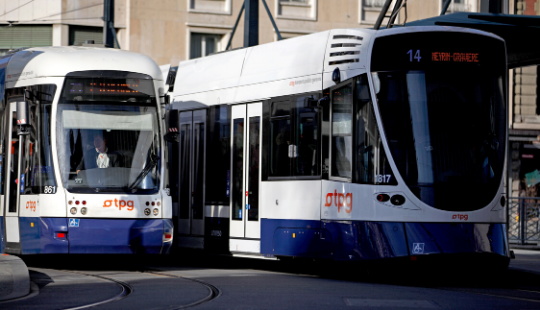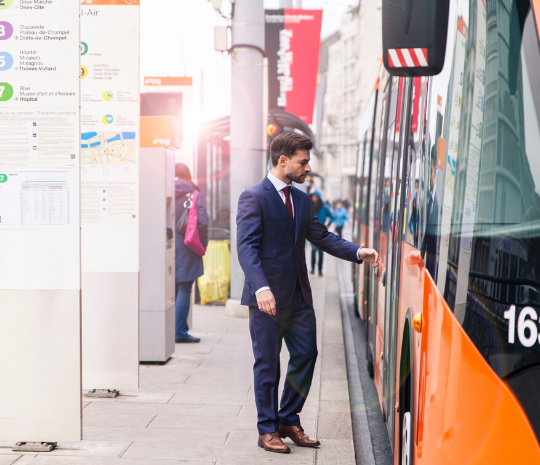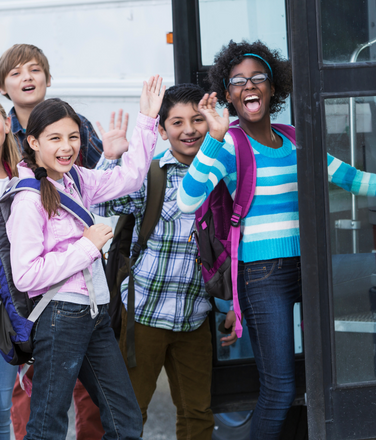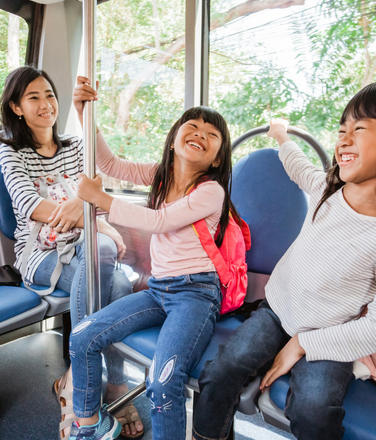Practical information for everyone
Some useful information about traveling on our transport network
At the stops
Stop locations are determined as much as possible by passenger needs. However, they also depend on road infrastructure and are subject to approval from the authorities. This is why some transfers can be very demanding.
To help you find your way between two points at the same stop, you will find connection maps and/or signage on the stop posts.

Layout of the stops (height of the sidewalks and platforms, bus shelters, garbage cans, pedometer strips for the visually impaired and blind, etc.) is handled by the municipalities, while the posts and distributors are installed and managed by tpg, subject to the necessary authorizations.
There are different kinds of information at the stops, depending on the frequency of use of the stop and the space available:
- on the post (or totem): name of the stop, line(s) serviced and destination(s);
- timetables of the lines serving the stop;
- network map;
- connection map;
- upcoming departures in real time (electronic terminal);
- fare information on tickets and extracts from the conditions of transport (DRT-tpg) on the distributors.

Request Stops
For request stops, remember to wave to the driver as the bus approaches the stop!
Opening the doors
Opening and closing of the doors is automatic, but for your comfort and safety, some buttons allow you to avoid automatic closing.
Red, blue, and yellow buttons: use them correctly!
Red button
These buttons can open the doors from the outside as well as the inside of the vehicle. However, this only happens when the driver has validated the stop, in order to avoid any risk of opening the doors outside the stops.
There is no need to press the button from the outside before the light comes on around the button (except for old trolley buses)!
From inside the vehicles, the buttons also allow you to ask to stop (essential for request stops).
Blue button
Once the door is open (unlike the opening caused by the red buttons), closing is not automatic, but rather controlled by the driver, who will make sure that the door is clear before closing it again.
This button is therefore reserved for people with reduced mobility or traveling with a baby stroller; it must be used in these cases to ensure traveler safety!
Citaro Bus Exterior Buttons
This type of button should not be operated with the finger, but instead with the whole hand simply placed on the light detectors.
Transport conditions
The rights and obligations of passengers and the conditions under which they can use our tpg network are described in our regulations for transport of passengers, luggage and animals on the network.
Cameras for the safety and security of everyone
In accordance with the provisions of the Federal Law on Passenger Transport, the Ordinance on Video Surveillance in Public Transport and other federal and cantonal regulations in force, tpg has equipped all of its vehicles, its points of sale and its sites (maintenance centers) with surveillance cameras.
The purpose of this monitoring is to:
- protect staff, travelers, customers, and visitors from aggression and incivility;
- ensure the security of valuables;
- prevent damage to the property of staff, travelers, customers, visitors and the company;
- allow for passenger identification in order to ensure the safety of the company's operations.
What to do in case of an incident?
In the event of a security breach, the traveler should ask the train crew to mark the images immediately after the incident.
If you are unable to contact the driver, please contact customer service.
In order to process your request as quickly as possible, please provide us with the following information:
- the date and time you entered the vehicle;
- the place (stop where you got into the vehicle);
- the line number;
- the direction of the vehicle;
- the tpg vehicle number (or, failing that, the vehicle type or plate number);
- your physical description and clothing at the time of the incident;
- the location where you were in the vehicle at the time.
The conditions for the use of video surveillance on board tpg vehicles as well as passenger rights are described in the regulatory provisions for the transport of passengers, luggage, and animals (DRT-tpg).
School trips
To facilitate your travel on school outings, we have set up a small procedure that will enable our driving staff to ensure you have a trouble-free trip.
D-Day
It's D-day, and your class is ready to go to the activity site. If several classes are traveling at the same time, try to stagger your departures as much as possible, to avoid more than two classes boarding the same vehicle. Our vehicles run relatively close together. It's often enough to wait a few minutes at a stop to see another vehicle arrive.
At the stop
To make it easier for our drivers to see you, move towards the front of the vehicle, at the
the 2nd door. This is equipped with a blue or yellow button for manual opening/closing controlled by the driver, ensuring safe boarding and alighting.

On board
To ensure a smooth ride, make sure students are seated or holding on to the safety bars.
safety bars. The vehicle may have to brake suddenly, causing falls. As far as possible, keep the group's noise level as low as possible to avoid disturbing other users and the driving staff.
Getting off the vehicle
Once you've reached your destination stop, give the driver a distinct signal to let him or her know that all the students are out and that the vehicle is ready to go.
